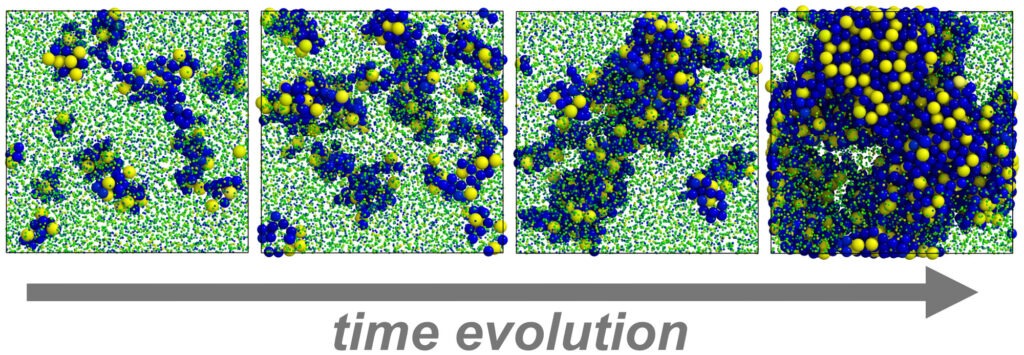Binary crystal puzzle
There is an observation that has been puzzling the colloid community for years: Experiments with binary mixtures of quasi-hard colloids and free energy calculations predicted binary crystals. But simulations of binary hard sphere systems never confirmed this phenomenon. Is there a discrepancy between experiment and simulation? Our manuscript, now published in Physical Review Letters, directly answers this question.
In brief: No, there is no discrepancy. With the right simulation method and good order parameters it is in fact possible to detect crystalline order in binary hard spheres. As we show in detail and also quantitatively for Laves phases, diffusion in the fluid is the reason why crystallization is much slower than in systems of identical spheres.
The results also lead to new scientific insights by demonstrating the existence of a transition from a nucleation and growth regime to a spinodal decomposition regime. The findings add to an active discussion in the glass physics community. Finally, state diagrams are reported as reference for future research.
Read about the research here:
Praveen K. Bommineni, Marco Klement, Michael Engel
Spontaneous Crystallization in Systems of Binary Hard Sphere Colloids
Physical Review Letters 124, 218003 (2020)
